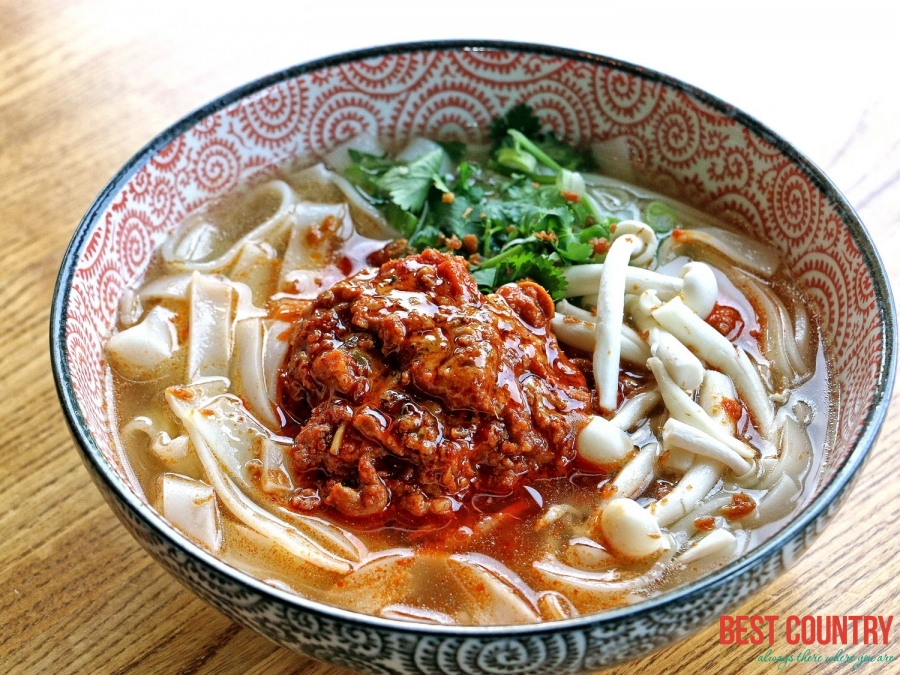Lao food is distinct from other Asia cuisines, although it is somewhat similar to the food found in the northeastern part of Thailand in the area known as Isan.
Laos Food
 Most Lao dishes contain vegetables and herbs, rice or noodles and fish, chicken, pork or beef.
Most Lao dishes contain vegetables and herbs, rice or noodles and fish, chicken, pork or beef.
The freshness of the ingredients is very important to Lao people who like to prepare everything from scratch, rather than use pre-prepared ingredients, as they believe this makes their food more delicious. Herbs such as galangal and lemongrass are favourites and padaek (Lao fish sauce) is found on every table.
One of the staples of Laos food is sticky rice. As the name reveals this rice naturally sticks together so it is easy to roll into small balls, dip into food and eat with your fingers.
A traditional everyday Lao meal is simple and normally consists of sticky rice, some natural vegetables and at least one kind of spicy sauce to dip the sticky rice into, plus perhaps some fish or meat.
Another daily favourite is noodle soup (called feu also spelt pho) which is a hearty soup incorporating meat, noodles and vegetables. Don’t be surprised if when ordering your noodle soup, a huge plate of local salad vegetables arrives at the same time, together with a range of sauces and condiments.
 Although Lao cuisine has many influences, such as Thai, Vietnamese, Chinese and French, when talking about Laos food, most people who know Laos or have been to Laos would know laap (sometimes spelt laab or larp).
Although Lao cuisine has many influences, such as Thai, Vietnamese, Chinese and French, when talking about Laos food, most people who know Laos or have been to Laos would know laap (sometimes spelt laab or larp).
Laap is a dish that is particular to Laos and is often served on special occasions such as weddings, Baci ceremonies or other celebrations as in Lao language laap means luck or good fortune. However you will find it served in every good Lao restaurant around the country.
Laap is made from chopped or thinly sliced meat or fish that is mixed with lime juice, fish sauce, mint, coriander, spring onion, chili and uncooked rice grains that have been dry fried and crushed.
It is usually accompanied by vegetables including eggplant, fresh chilies, mustard leaves and lettuce. It can be eaten with ordinary rice or sticky rice and is usually eaten with fish/meat soup depending on the main ingredient being used.
If you are a visitor it is useful to ask that your laap is cooked, as in some parts of the country locals like to eat it raw, particularly fish laap.
Other Lao favourites include papaya salad (a spicy mix of green papaya, lime juice, fish sauce, fresh chilies and peanuts), barbecued fresh fish and grilled meats (often served as small kebabs) and steamed fish or chicken in banana leaves.
Laos is blessed with a huge variety of fresh fruit and most meals will conclude with a plate of freshly cut fruits such as mango, pineapple, water melon and dragon fruit.
You can wash down your Lao meal with the country’s award winning beer, Beer Lao, or fresh juices made from lime, sugar cane or coconut, as well as fruit shakes.
Every region of Laos has its own specialties, for example in Luang Prabang one treat is kaipen a fried snack made of fresh water weed eaten with jaew bong, a sweet and spicy Lao paste made with roasted chilies, pork skin, galangal and other ingredients. So make sure you ask what’s best to eat in each town.
In the past, a Lao family would eat home cooked meal together sitting on the floor around a Lao-style table called a pa kao or ka toke. Though this tradition is still common in the country side, it is not widely seen in urban areas nowadays.